Sleeping Rough Is Wild Camping Without The Romantic Preconceptions
Wild camping sounds adventurous and romantic. And oftentimes, it is. But in reality, a wild camp is sometimes little more than a night of rough sleeping at the side of the road.
The art of wild camping on a long-distance bicycle tour is a dance between freedom and self-reliance. As your trusty steel touring bike carries you through stunning landscapes, the allure of bedding down under a starlit sky becomes irresistible. It’s an invitation to strip away modern comforts and immerse yourself in nature’s embrace.
On a multi-month bike trip, every sense comes alive – the scent of pine trees mingling with freshly fallen rain, the whispering melody of leaves rustling in harmony with nocturnal creatures. Finding the perfect spot to pitch your tent requires intuition, combining stealth and respect for diverse landscapes.
Rough sleeping is a cornerstone of bicycle travel and bikepacking that requires skill and nuance

You become attuned to hidden nooks sheltered by leafy canopies or gentle slopes that delight weary legs just before sunset. The symphony of colour painted across skies at dawn rewards those brave enough to embrace its early light. Wild camping nourishes your body and ignites a deep connection with nature; it challenges societal norms while uncovering untamed parts within yourself.
The Challenges of Rough Sleeping Around The World
Yet, like any adventurous outdoor pursuit, mastering the craft of rough sleeping takes practice and adaptation. Each location presents unique hurdles – from elusive water sources to curious creatures at night.
Awareness is required; adapting to ever-changing landscapes becomes second nature.
This introduction speaks to the perfect wild camp in a forested glade next to a crystalline stream surrounded by fairies and fireflies. Now that we’ve set the scene of the idea, here’s a snapshot of the reality.

Hiding From The World At Dusk
It’s dark; you’ve dismissed the last fifteen potential spots because they just weren’t as picturesque as the image you had in mind. That and you wanted to squeeze a few more miles out of the day before finally putting down the bike. And you were certain there was a better spot just a bit further along…
Now, you have to make do with your immediate locale. You’re hungry. You hear dogs howl. Or is it wolves? Whatever, they sound pretty far away for now. Is that a bus stop? Ooh, excellent, if I could hide in there for the night, no one will see little old me cooking and fidgeting with my head torch on.
Oh no, wait a sec, here’s a teenage boy on a bicycle. He’s seen me. Bugger. He won’t tell all his friends, will he? Will they stare at me all night?
You’re as likely to sleep rough in a skate park in the middle of a busy town as you are to find the idyllic mountaintop vista in the remote wilderness. Becoming comfortable with both scenarios will serve you well on your round-the-world bicycle tour.
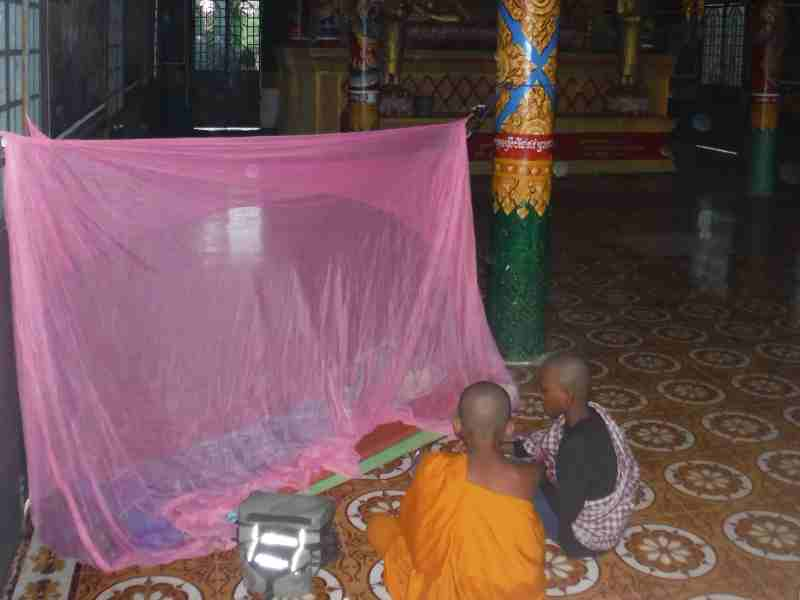
Is Rough Sleeping Legal?
Like wild camping, the legalities of rough sleeping vary significantly across different regions. Generally, the law can be grouped into three categories for both activities: legal anywhere, possible with permission, and restricted.
United Kingdom
In Scotland, wild camping is generally legal due to the Land Reform Act 2003. In England and Wales, however, it’s mostly illegal without landowner permission, except in some parts of Dartmoor and other specific areas.
Europe
Laws vary by country. For example, it’s mostly allowed in Scandinavia under Everyman’s Right (Allemansrätten), but in countries like France, Spain, and Italy, it’s often restricted and only allowed in specific areas or with permission.
Rest of the World
The legalities are diverse. In some countries like the USA and Canada, public lands like national forests often permit wild camping, while in others, it can be heavily regulated or forbidden.
While it’s always essential to research the specific regulations of each country or region before wild camping, it is also possible to do it first and explain later.
I’ve slept rough and wild camped in tons of illegal places by dint of not having a better option. That said, as a general rule, there are a few factors you may wish to consider as you plan your RTW bike trip.

Wild Camping 101
Here are 10 tips for wild camping for free during a long-distance bicycle tour:
- Research Local Custom: While it may be legal to camp, culturally, it could be unfamiliar or even taboo. Camping in Southeast Asia just looks like you’re hiding in the bushes. A hammock is a more widely known concept and will attract less attention and be more comfortable, too – tents are crap in humid climates.
- Find Secluded Spots: Look for hidden areas off the beaten path. Make sure to be unseen as you leave the road. The game is to be invisible and unfound for the next 12 hours…
- Leave No Trace: Respect nature by leaving your campsite as you found it. A rule for life.
- Arrive Late, Leave Early: Set up camp at dusk and leave at dawn to stay discreet. It’s not always possible, but it’s handy to form the habit of breaking camp as early as you can.
- Be Prepared: Carry a lightweight tent and sleeping gear suitable for various weather conditions. My cycle touring kit list includes a comprehensive camping section.
- Manage Risk: Choose safe locations away from hazardous areas and wildlife.
- Carry Enough Water: Make sure you have enough water to cook and drink for the duration of your camp.
- Be Respectful: Avoid private property and be mindful of your impact on the environment.
- Keep a Low Profile: Avoid drawing attention with loud noises or bright lights.
- Emergency Plan: Always have a backup plan and let someone know your itinerary.
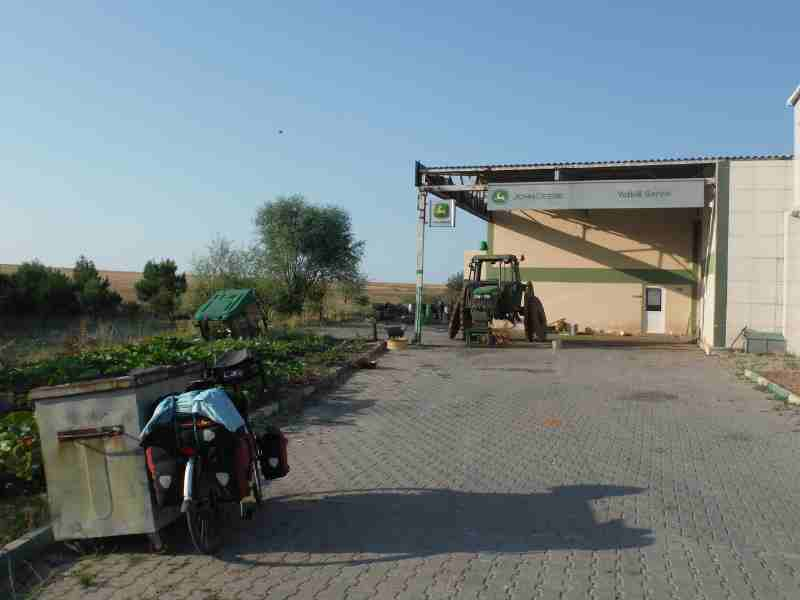
Dr Sleep Rough and Mr Wild Camp
Wild camping enables long-term travel due to its free-ness. Rough sleeping can enhance the adventure of a bicycle tour, offering unique experiences and connections with nature.
I was rough sleeping around the world as much as cycling around it: both defined my journey. Usually, it was easy enough to find a patch of earth to call my own, but I fancied myself an expert now. To dodge detection, I was strategic (camping high beats camping low, for instance, people look down at things more often than up at them). Pitching your tent is best done on the cusp of darkness too, when you can evaluate your campsite before night falls and hides you away. Camp too early and you risk getting spotted, camp too late, when it’s dark, and you’ll inevitably wake up the next morning beside a sign saying ‘Warning. Mine clearance in progress’.
Stephen Fabes, Signs of Life
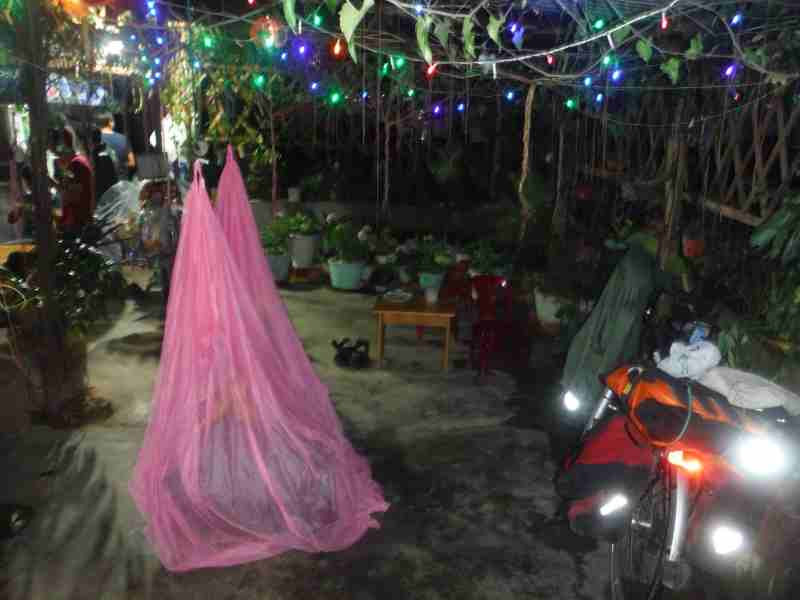
Acquire The Skill Of Rough Sleeping
Unless you’ve put yourself in a position where you have to sleep rough, the subtlety and nuance of a good place vs a crap one can be lost. To rough sleep successfully on a bicycle tour, consider these pointers:
Choose Discreet Locations
Opt for spots that are out of sight and away from busy areas. This is often easier said than done. I’ve slept in shop doorways, at railway stations, in busy village squares – they’re fine until a stranger succumbs to the urge to strike up a conversation, then it becomes near impossible to sleep.
Safety First
Safety is a false friend. The whole idea of something being safe is a misnomer. Safety is an illusion of language. The level to which you trust yourself and others weighs more important in this activity than any other. Beyond mutual trust is the ability to defend yourself and your possessions if threatened – a scenario sane-minded folks prefer to mitigate or avoid.
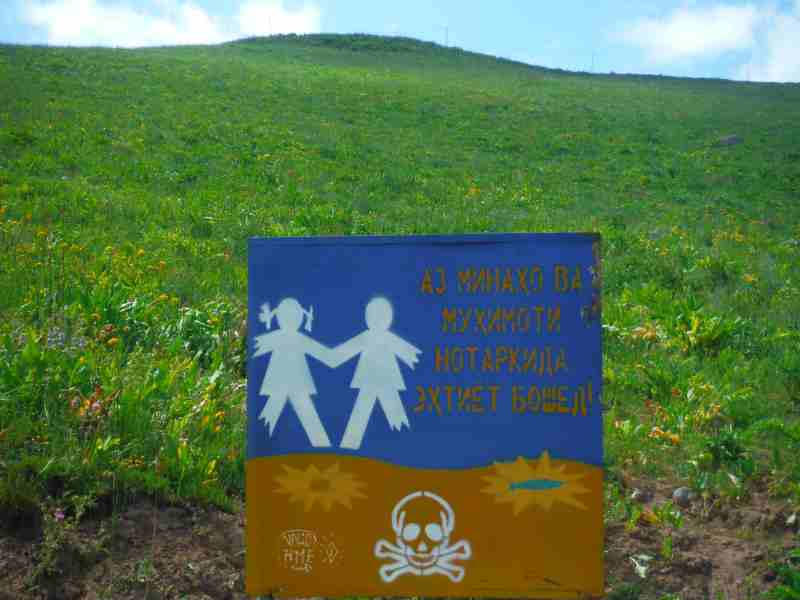
Minimal Impact
Leave no trace of your stay. Be respectful of the environment. As travellers and custodians of the planet, we’re all better off when we look after the place a bit.
Quick Setup and Departure
Be prepared to set up and pack up quickly. This will become your superpower. As the nights rack up, you’ll know exactly where the essentials are packed and what you need for a night under the stars. No fuss, no hassle, just straight-up rest and relaxation!
Stay Vaguely Legal
Ensure rough sleeping is permitted in the area. There’s unlikely to be a sign to say it’s legit, so use your best judgement. I once camped in Myanmar, where camping is expressly forbidden. I was in such a remote place that I figured no one knew. A few minutes after sundown, I’d got my tent up and stove fired up for a camp cooking session, and a couple of very friendly Burmese men came up on my camp.
Nothing was said, smiles were exchanged and we left it at that.

Weather Awareness
Be prepared for changing weather conditions. I was once caught in a cyclone off the coast of Vietnam, camping on the hardstanding of a ferry port. Within a few minutes, there was a puddle in my tent and everything was soaked. I spent the next week drying out my entire kit. Freak weather can be a challenge.
Emergency Plan
Always have a plan in case of emergencies. What is the protocol if shit gets weird? I once met a Frenchman in Hampi who had encountered some drunks in North India. They approached with weapons and attempted to rob him. He grabbed the most important of his things and ran. It’s incredibly rare, especially in Asia vs Latin America, but it can happen. Be alert to your surroundings at all times.
Basic Comfort
Use a sleeping bag or mat for minimal comfort. I use a Thermarest sleeping pad, the Trekker chair adapter is a game changer, and I tend to have a yoga mat, which serves as extra insulation and padding. A silk sleeping bag liner plus your desired Tog down sleeping bag is a little bit of luxury and practicality for bedding.
Respectful Behavior
Keep noise to a minimum and respect the locals. Silence goes a long way to maintaining the privacy and seclusion of your camp. In more populated areas, asking for permission to camp can be prudent. This request typically results in an invitation to join a family meal and a patch of ground in a garden or even a sofa for the night.
Be prepared to share stories and enjoy quizzical looks from stunned hosts as you attempt to explain your journey using a paper map and pantomime theatrics.
Stay Inconspicuous
Avoid drawing attention to your sleeping spot. Unless you ask for permission to camp, low-key tends to be the best option for stealth camping.
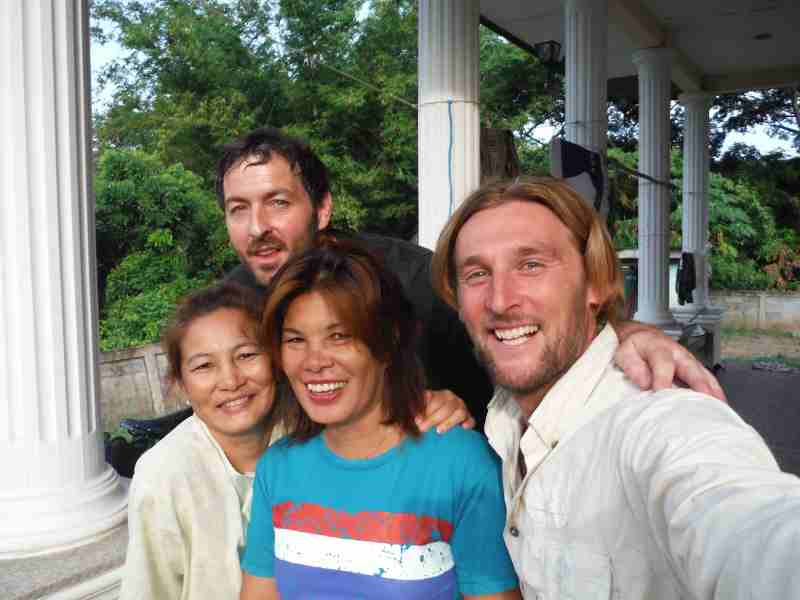
Differences Between Rough Sleeping and Wild Camping On A Bike Tour
Wild camping and rough sleeping, while both are forms of outdoor sleeping, differ in their approach and setup:
Town and Country
Wild camping typically occurs in natural, remote areas, often involving a tent or shelter. Rough sleeping usually happens in urban settings without formal shelter. This is a helpful distinction. As you progress with your sleeping outside experiment, you’ll know when to ask permission, when to hide at dusk and when just to throw caution to the wind and camp wild and free.
Creature Comforts vs Convenience
Wild camping allows you to use your tent, sleeping bag, and camp cookware. Rough sleeping is more impromptu, often with minimal use of camping gear. I think there’s an argument to suggest that bikepacking tends towards true wild camping by dint of pursuing off-road, gravel paths. Bicycle touring leans more towards the RTW expedition, which often means unusual and unexpected sleeping arrangements.
A proper nature-bound wild camp is generally more comfortable due to using camping gear. Rough sleeping tends to be more rustic due to necessity and exposure to urban elements, like people. but it equally opens up the possibility for invitations and connection with locals.
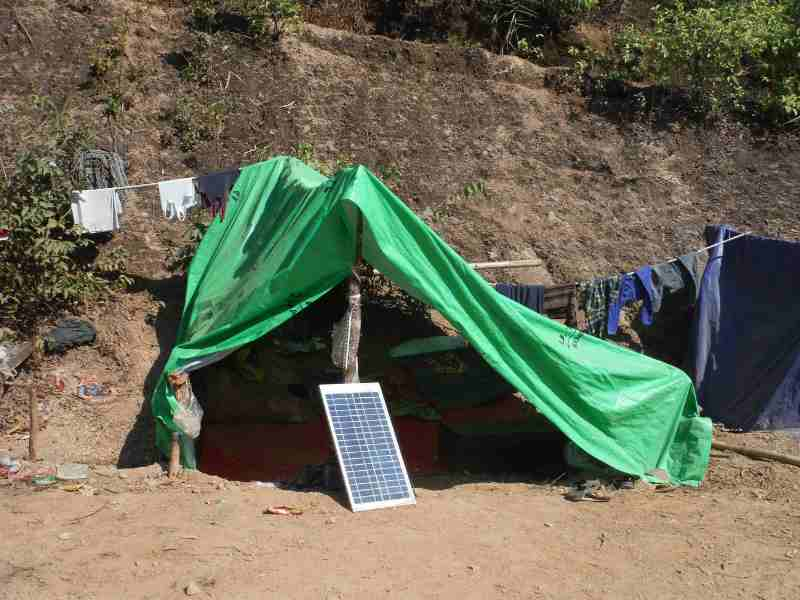
Aram Se, Take Rest
Whatever you call it, a night under the stars free from disturbance is essential for physical recovery and peace of mind. I found solace in the time I slept outside, rough or wild. My self-chosen vagabondage was a simulation of homelessness in some vague respects.
While rough sleeping on a bike trip is not the same thing as sleeping rough because you have no other choice, experiencing some challenges cultivates empathy and kinship with those less fortunate. Perhaps it is one of the distinguishing features of independent bike travel vs an RTW plane ticket or Gap Yah backpacker trip.
Sleep On, Dream On
So saddle up, my friend! Commence your adventure. Take a trip where solitude kindles introspection, stars guide your path forward, and waking up in new surroundings feels more like returning home than starting anew.
Embrace the unknown, lose yourself in the night to a dream. Rest easy and sleep well, for tomorrow brings a new dawn.
Have you got a rough sleeping tip to share with the community? Comment below on your best and worst wild camp experiences:
